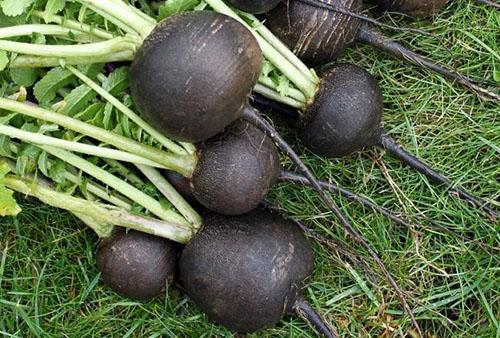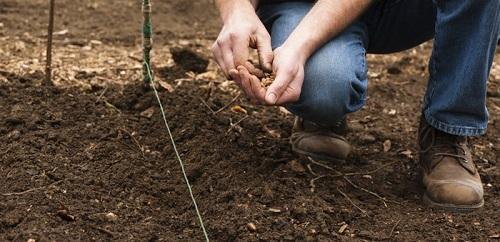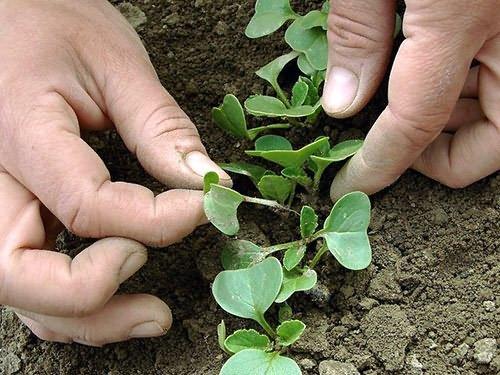Growing black radish at their summer cottage
 Gardeners plant black radish mainly as a medicine, because its medicinal properties have been known for a long time and cannot be questioned. It helps to cure cough better than any other pill and normalizes bowel function, relieves inflammation in sciatica and soothes the nervous system.
Gardeners plant black radish mainly as a medicine, because its medicinal properties have been known for a long time and cannot be questioned. It helps to cure cough better than any other pill and normalizes bowel function, relieves inflammation in sciatica and soothes the nervous system.
There is nothing complicated about how to grow black radish. This vegetable is absolutely not capricious in its care and does not require special attention to itself. The only nuance that needs to be paid attention to is the planting timing, which is especially important if the root crop is planned to be stored until next season.
When is the best time to plant?
Basically, radish is planted by sowing seeds in open ground, although some gardeners first grow seedlings in order to obtain an early harvest. But even the root crop planted with seeds ripens quite quickly and after 3 months is ready for use.
Sow seeds black radish recommended:
- at the end of April - summer varieties for human consumption;
- at the end of June - winter varieties for long-term storage.
If winter varieties are sown too early, the plant goes into the arrows, and the roots crack. Late planting of seeds (in the second half of July) is fraught with the fact that the crop will not have time to ripen before frost.
Planting site selection and soil preparation
The beds for black radish must be placed on the sunny side of the garden. The best predecessors for her are legumes, cucumbers, tomatoes, carrots and potatoes. Cannot be planted after "related" crops such as radishes, turnips, and cabbage.
The soil must be prepared in the fall. After harvesting, dig up the plot and add for each square meter of the area:
- 1 bucket of rotted manure;
- 1.5 tbsp. wood ash.
Sowing seeds

In order for the seeds to sprout faster, they can be germinated, or they can be sown dry immediately. The row spacing should be about 40 cm, and the planting depth should not be more than 3 cm.
After 3 true leaves are formed on the seedlings, the crops must be thinned out, leaving 5 cm between them.Repeat the procedure when small fruits (about 1 cm) are tied, increasing the distance to 15 cm.With a denser planting, the roots will be small and completely not mature.
Watering and fertilizing

In order for the black radish to grow large and sweet, it must be watered regularly (every week), and also fed with mineral fertilizers 2 times during the season.
Organic matter, especially applied in large quantities, reduces the shelf life of the crop.
Fertilizers should be applied during watering at the stage of formation of 4 leaves, and after a month, repeat the feeding. To do this, prepare a solution from:
- buckets of water;
- 60 g superphosphate;
- 20 g urea;
- 15 g of potassium chloride.
You can start harvesting summer varieties as early as August. Winter radish is dug up in late autumn, but always before the first frost, since frozen roots become tough and are not stored.